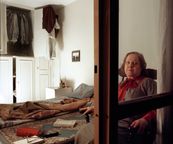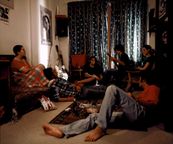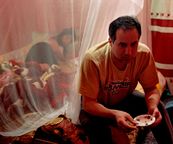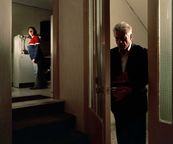We live in paradoxical socitey
(in collaboration with Ramyar)
One of the few countries of the world whose people have been living in a dually politicized atmosphere for three decades is Iran; a nation -with a religious origin- which after a Cultural Revolution naturally stepped into a path that was different from the previously experienced one.
Iranian’s living in such a different and newly changed environment unintentionally placed their lives in a dual atmosphere in terms of governmental issues, and this made them to unbelievably choose a self-censorship path in consistence with governmental points of view which led to the split of lives and thoughts.
A legacy survived and transferred from one generation to next generation which was represented objectively in two parts of Iranians’ life. The first part being our home is the privacy of family and considered as a safe space to live in which we as members are free to think, wear and behave the way we want. On the contrary, there’s a life outside our homes full of fundamental and basic differences in which we are attacked by deviations and pretentions that are required in order to survive in such an outer society.
Such an environment is observable at most in the urban middle class society, i.e. the people who made the thick diagram of social classes thirty years ago and uniformly made the revolution start but strangely the so-called thickness decreased very soon.
These moving parts of the society consist of individuals who were unjustly ignored by political leaders; a class of people whose demands were treated as a second-class claims. During these decades, they found their values ruined by the heavy burden of promoted idealism. And during the years after reforms, their virtues were disregarded by heavy wave of justice-based movements making them depressively and silently isolated. They hopelessly found that their share in social and political decision-making was decreasing gradually. Also, they found themselves struggling to live with uncertainty and instability in that foggy condition. As if nobody saw them and cared about them. As if they were of no importance in nationwide enthusiasm for serving the poor and the deprived. It is strange that the political leaders who were not strong enough to control capitalism, and could not penetrate into its economic and political establishments, impertinently took a step with some plans in the field of women, university students, teachers and handworkers.
Through these images, we aim to illustrate the output of this dual life in a constructed atmosphere which leads to fear and indifference. This collection has a narrative inside which is the result of our thoughts and necessarily there is no rule that sub narratives are happening in each image of it; meaning that no boundary can be marked between reality and imagination, or between a documentary image and a subjective one. No people existing in the images are themselves but act as the actors and actresses playing a role instead of any other individual existing and living in the society.
Ali&Ramyar





























